What We Learned When NASA Sent Jellyfish To Space

On June 5, 1991, NASA embarked on a mission that featured several firsts: For one, this was the agency’s first mission that included three female crew members, which rocks our socks. But, on a more bizarre note, onboard the ship there were also 2,478 jellyfish, which had never been studied in space before. Why were jellyfish, out of all living things, brought to outer space to be studied? What did NASA learn from studying jellyfish? It turns out that humankind has more in common with these swimming mushrooms than one might think at first glance.
Why Did NASA Study Jellyfish in the First Place?
Space launch STS-40 was a NASA mission that’s also known as SLS-1. “STS” stands for Space Transportation System. For those who aren’t space travel enthusiasts, that’s the way in which NASA labels its space shuttle launches and expeditions.
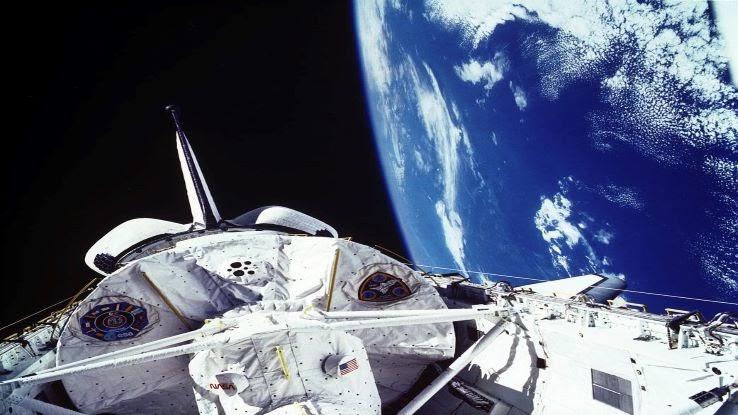
SLS-1 (pictured above), in this instance, refers to Spacelab Life Sciences-1. “SLS” can also mean Space Launch System, but that’s the importance of the -1. Spacelab was a removable laboratory with the purpose of studying life sciences in space. Life sciences, like your middle school science class, involves the study of living organisms. The purpose of Spacelab was to study how animal life reacts to the weightlessness of space, also known as “microgravity.”
Space Shuttle Columbia, which tragically disintegrated upon re-entry into Earth’s atmosphere in 2003, was an orbiting ship that circled the planet for 27 missions to gather evidence about what happens to the human body in outer space. For the STS-40 mission, seven humans, 30 white rodents and the 2,478 jellies were brought on board. This was the first time that NASA sent jellyfish up to space, but it wasn’t the first time animals entered the thermosphere: Aside from rats, monkeys, bees, moths, spiders and fish have also gone into space.
The mission lasted nine days. Aside from the jellyfish, the crew tested animal equipment on the rodents and studied the nervous systems, heartbeats and blood pressures of the crew. Of all the findings from the trip, the jellyfish seem to have emerged as the stars of the show.
In a second mission, but not the next mission, called STS-65 (a.k.a. IML-2), jellyfish went back up into space to be studied by scientists once again. This time, the crew brought over 100 newts along. In both experiments, jellyfish were allowed to replicate. Jellyfish can reproduce asexually or with a partner, so the number of jellyfish in space increased as the days went on.
Jellyfish, Calcium, Humans and Gravity
Jellyfish were brought to space because, believe it or not, jellyfish and humans have a similar relationship to gravity. This might seem strange at first, but close your eyes for a minute and think about how a jellyfish moves. Usually, it’s as if the jellyfish steers itself through the water. Rarely do jellyfishes’ “umbrella heads” ever look out of proportion or reversed the way you’d see an umbrella open up in a rainstorm.
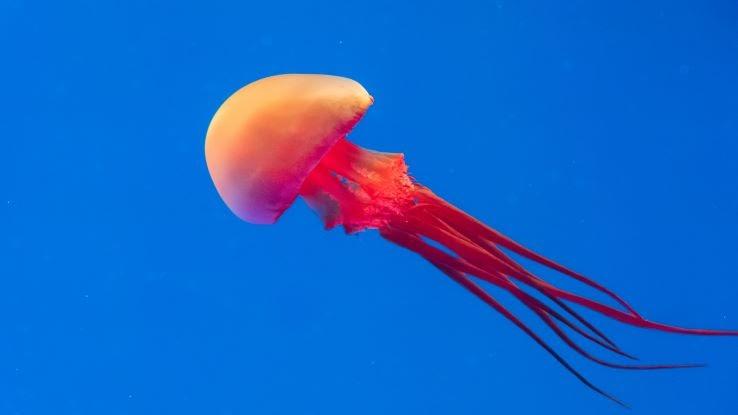
There’s also a scientific reason why humankind’s and jellyfishes’ relationships to gravity are so similar. It all has to do with calcium. Jellyfish have calcium sulfate crystals growing under their bell (the umbrella/mushroom-type outer layer). As they propel through water, the crystals adjust to the gravitational pull, and that movement sends a signal to the brain that lets the jellyfish know which way is down.
People have similar crystals and fluids in the human ear, and their presence affects hairs that alert the brain as to what angle a person’s head is at. Ever notice how if you’re looking down at your phone or a book, your head feels like it’s at an angle that’s pointing towards that ground? Jellyfish experience a similar feeling when they swim.
What Were the Findings of These Experiments?
In 1991’s STS-40 mission, scientists found that jellyfish born on Earth underwent some hormonal changes in space. They also found that jellyfish born in space had a hard time swimming on Earth upon their return. It was noted that both jellyfish born on Earth and those born in microgravity — meaning an environment where there was little to no gravity — had difficulty orienting themselves in space. This could give us an idea of what it will eventually be like to have water in space stations for people to swim in or how we can expect space fisheries down the road to function.
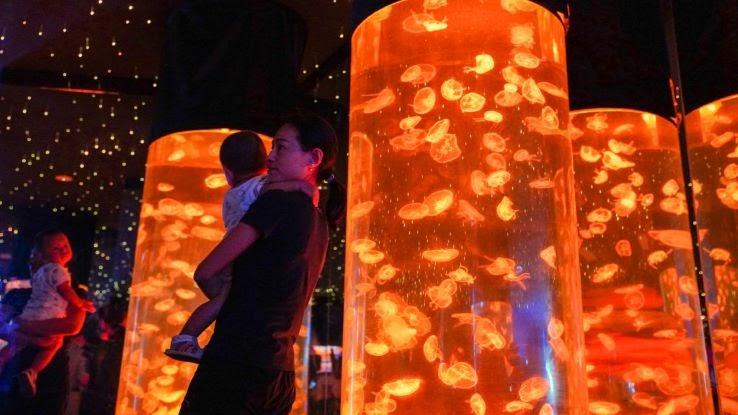
Scientists went on to find in 1994’s IML-2 mission that budding and metamorphosis of jellyfish in microgravitaional conditions went well. That means that jellyfish did not have many issues maturing through their life cycles and handled microgravity well. They also found that jellyfish that were developed (born) in space had a hard time adjusting to normal gravity after being born in microgravity conditions and were more likely to have abnormal arm development. You can read all about it in Life Into Space, a report that’s available for free on NASA’s website.
These findings could mean one of two things: The jellyfish were born with developmental defects that hinder their movement, or they simply do not want to move.
Some have speculated that this means that the jellyfish are depressed. This could mean more simply that the invertebrates are having a tough time moving around and adjusting to gravity.
As for what it means for humans, it’s possible that people will fall as soon as they step on to Earth for the first time if they’re born in space. They could be directionally challenged, meaning they may struggle to align their bodies to a point to where they can commit to walking in a certain direction. It could also mean cases of vertigo, even when sitting.
The Transformation From Experiment to Myth
In 2013, Deep Sea News reported on the jellyfish and the study’s findings in a humorous way. Like a game of telephone, the true story of these jellyfish was blown out of proportion. Publications cited this mission and made the assumption that the jellyfish had recently returned from space — that they had been up in the sky for 20 years.
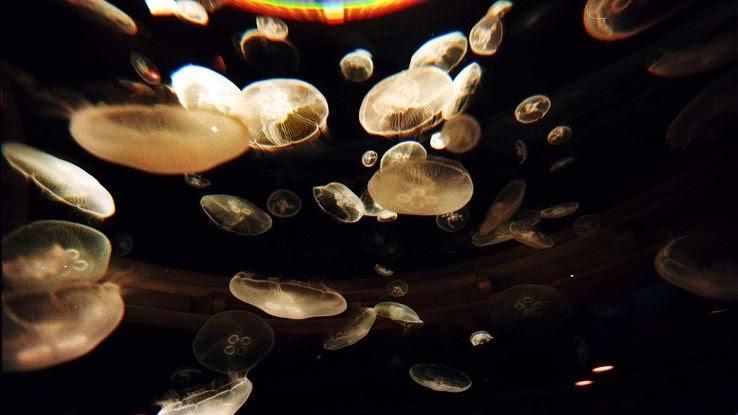
This was not the case, however; the International Space Station wasn’t launched until 1998. A slew of articles followed, celebrating the 20th anniversary of the jellyfish allegedly living in space that entire time. But something was majorly off: In 1993, jellyfish did not go up into space.
In October of 1993, STS-58, also known as SLS-2, went up. This is a lot like STS-40, also known as SLS-1, which happened in 1991. NASA didn’t bring jellyfish back to space until July 1994 for IML-2. Many of the reported findings made a few inferences that don’t add up with the dates and available data.
What Does This Mean for the Future of Space Travel?
If people ever want to live on another planet or in outer space itself, they’ll need to know how the human body will develop in microgravity situations. The ways the body reacts to Earth’s gravity after being in space for a significant period of time is also important, especially if humans are eventually going to be born in space. There’s a chance that humans born in space might face developmental struggles.
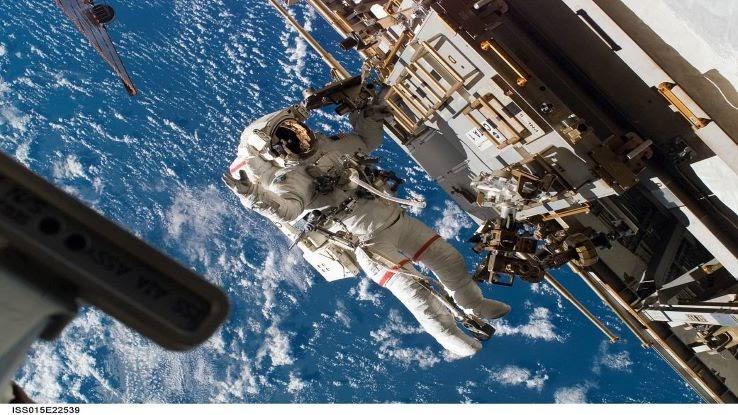
Thankfully, NASA has been looking at people more closely in this matter. In the recent Twins Study, one twin lived in space for a year while the other stayed on Earth as a control subject. The study found that entering the microgravity of space after being on Earth for so long, and then later going back to Earth, can take quite a toll on the body. Like every frontier, humankind has a lot of exploration to do before we’ll fully understand just how well we can adapt to living in space.
As for the jellyfish of NASA, if we ever make it into space long-term, they’ll be touted as heroes for Earth and humankind. Perhaps it’s fitting, then, that the thought of them invokes legend. While jellyfish may be an invasive species, it’s comforting to know that they also have a hard time figuring out which way is up.





